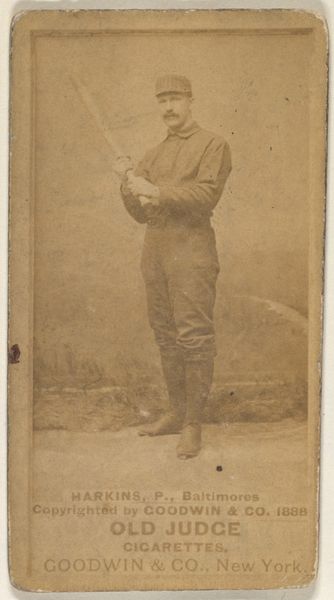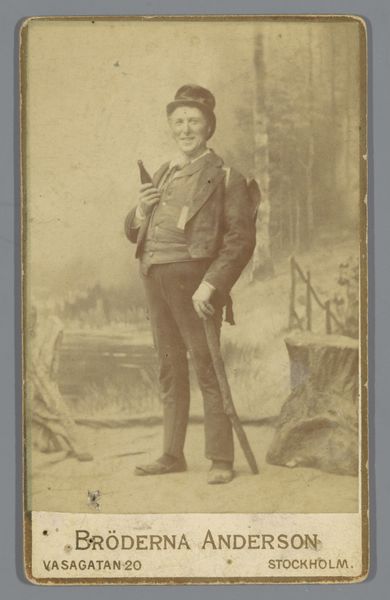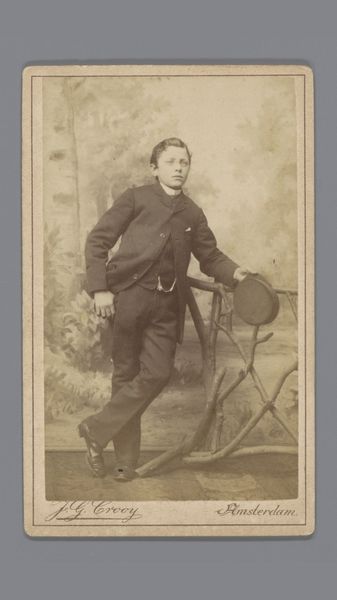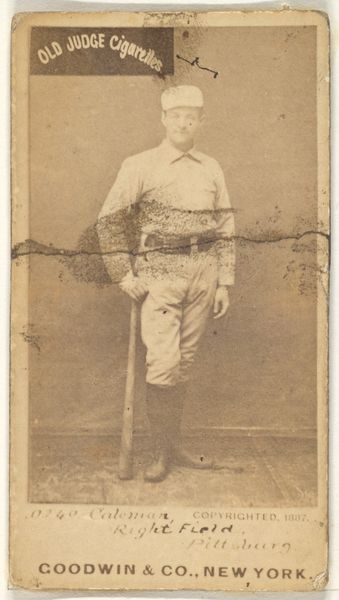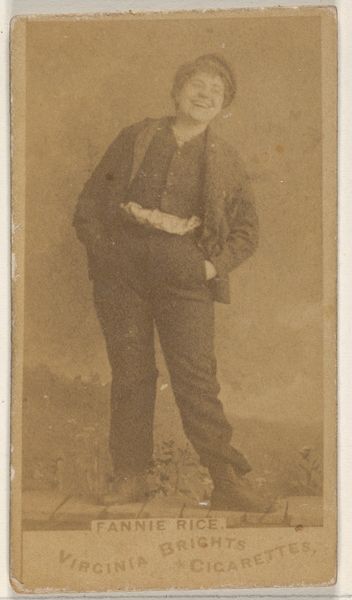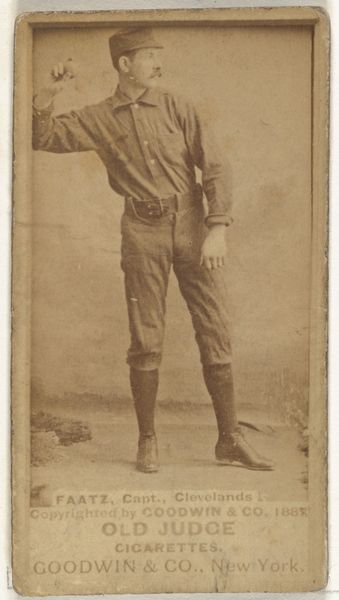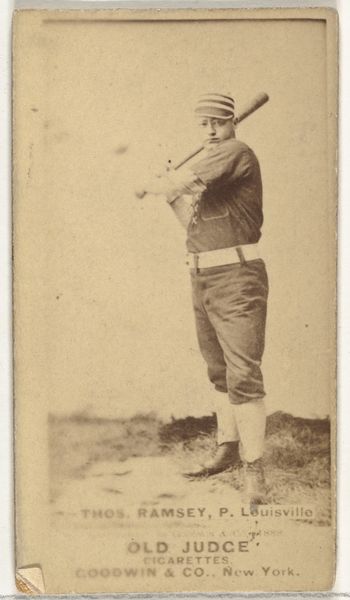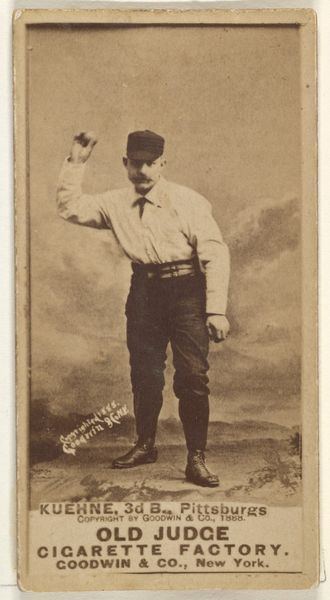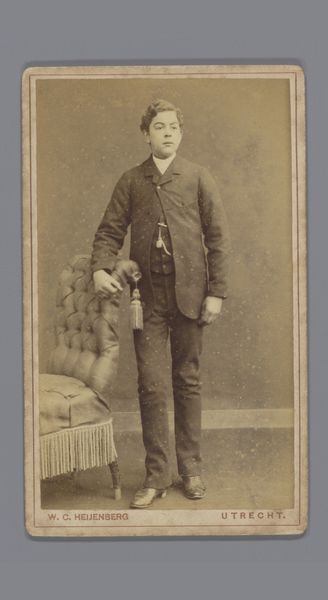
Portret van een onbekende jongen (vermoedelijk) in padvindersuniform met een fiets c. 1878 - 1895
0:00
0:00
photography, gelatin-silver-print
#
portrait
#
photography
#
coloured pencil
#
gelatin-silver-print
#
19th century
#
realism
Dimensions: height 93 mm, width 55 mm
Copyright: Rijks Museum: Open Domain
Curator: Let’s have a look at this photograph. It’s a gelatin-silver print from around 1878-1895, titled "Portrait of an unknown boy (presumably) in boy scout uniform with a bicycle". It's attributed to D.W.J. van Winsheijm. Editor: What strikes me immediately is the directness, even sternness, of the boy's gaze. And then the careful arrangement of textures, the tweed of the knickerbockers against the metal and rubber of the bicycle. Curator: That sternness is something, isn't it? Photographic portraits at this time were a serious affair, often reflecting the sitter’s social standing and projecting an image of respectability. Consider the emergent middle classes using portraiture to solidify their identity in a rapidly changing society. Editor: Right, and this "boy scout" connection is interesting. It points to shifts in leisure and youth culture, but looking at the bike's construction... it speaks to a new industrial precision and accessibility. The photographic process itself underscores this, producing images more readily available than painted portraits, democratizing representation. Curator: Exactly. Photography transformed the speed and scale of representation, influencing realism within visual culture. Consider also, the imagined rural idyll suggested by the painted backdrop. These portraits were carefully staged and mediated to convey particular messages, playing into the values of the late 19th century. Editor: The backdrop clashes with the boy’s solid, almost modern pose, highlighting artifice. The silver gelatin process offers a fascinating level of detail on the chain mechanism; those components weren’t easily available before a certain point. The bicycle's materiality embodies industrialized production and mass consumption; its mechanics reflecting new forms of labor. Curator: A simple image reveals such complexity! We have this tension between tradition and modernity, the individual and society, which tells us much about this transitional period. It becomes more than a simple likeness of an individual. Editor: Agreed. By attending to both the social image projected, and the materiality of its production and contents, it becomes a portal into understanding shifts in the way identity and leisure were conceived at the time.
Comments
No comments
Be the first to comment and join the conversation on the ultimate creative platform.
